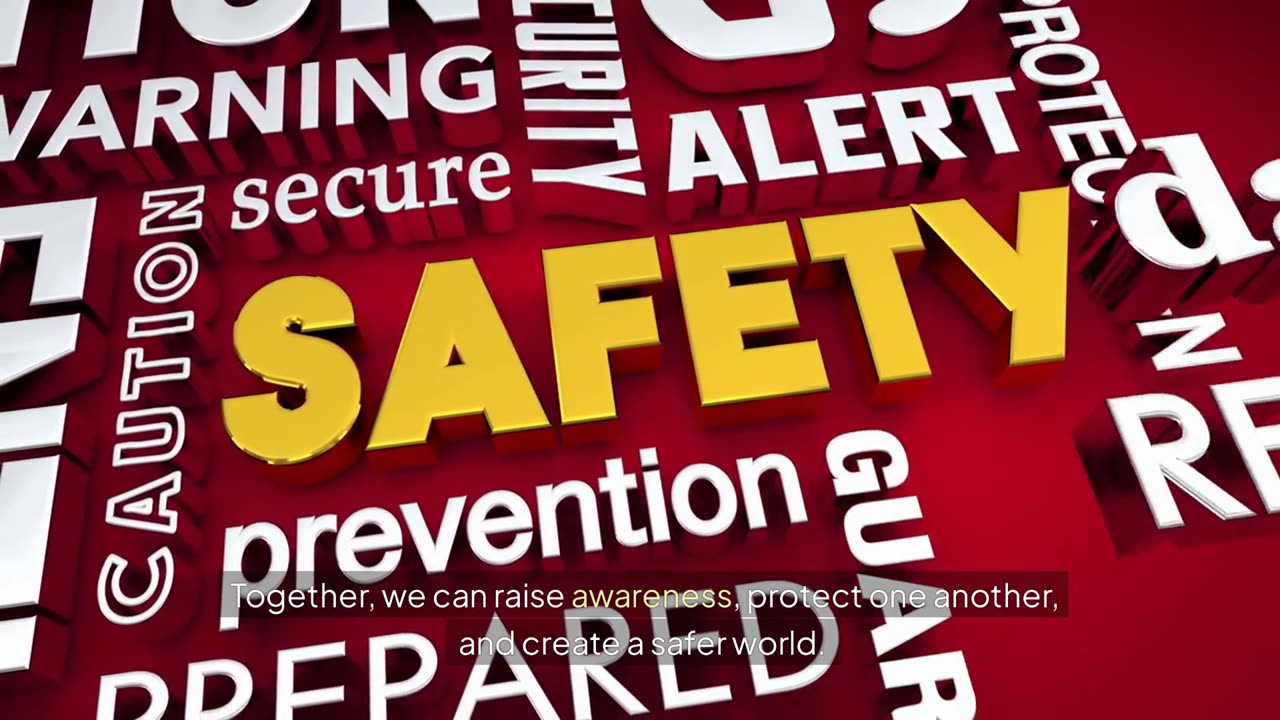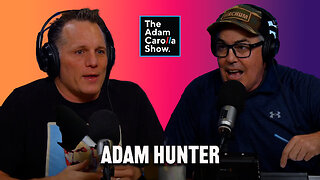Premium Only Content

The Dark Side of GHB: Unveiling the Drug Allegedly Linked to P. Diddy's "Freak Off" Parties
#
In the glamorous world of music, celebrities often carry larger-than-life personas, filled with tales of parties, excess, and scandal. One such figure at the center of attention is music mogul Sean Combs, aka P. Diddy, who has been linked to notorious events allegedly involving the use of GHB, a dangerous drug that is believed to have played a role in some questionable activities. But what is GHB, and why is it considered so dangerous? In this article, we dive deep into the murky waters of GHB, exploring its effects, history, and the dark path it can lead to when used irresponsibly or maliciously.
Let’s unravel the mystery behind this infamous substance.
---
## **What Is GHB? A Closer Look at the "Date-Rape Drug"**
GHB, short for Gamma-Hydroxybutyrate, is a central nervous system depressant. Often described as odorless, colorless, and with a salty taste, it has garnered a notorious reputation for its misuse in criminal acts, particularly as a date-rape drug. However, its origins and effects stretch far beyond this unsettling label.
First discovered in the 1960s, GHB was initially studied for its potential as an anesthetic and later as a treatment for narcolepsy and alcohol dependence. Over time, its use shifted into the world of recreational drugs, often abused in club settings for its euphoric and disinhibiting effects. Users report feelings of extreme relaxation, enhanced libido, and emotional openness similar to that of alcohol or MDMA.
Yet, GHB’s effects are unpredictable and dose-dependent. While small amounts may result in euphoria, slightly higher doses can lead to confusion, dizziness, unconsciousness, and in severe cases, death. What makes it particularly dangerous is its potent interaction with alcohol or other depressants, multiplying its lethal effects.
---
## **GHB and Its Dark Reputation: Why It's Called the "Date-Rape Drug"**
GHB’s notoriety as a date-rape drug stems from its ability to render individuals incapacitated quickly. It’s particularly sinister because it’s easily mixed into drinks, undetectable by sight or taste. Once ingested, victims often experience drowsiness, dizziness, and unconsciousness. Most terrifying of all, GHB can cause amnesia, leaving victims with little or no memory of what happened while they were under its influence.
In the 1990s, a series of high-profile cases in the U.S. and the U.K. brought GHB’s dangers to light. One notable case was that of British serial killer Stephen Port, who drugged, raped, and murdered several men using GHB. This led to the substance being classified as a Schedule 1 drug in many countries, meaning it has no accepted medical use and is considered highly dangerous.
The challenge with GHB is that it metabolizes quickly, often disappearing from the body within hours. This makes it difficult for authorities to detect the drug in the victim’s system, complicating investigations into sexual assault cases. The transient nature of the drug only adds to its allure for those seeking to use it for malicious purposes.
---
## **Allegations Surrounding P. Diddy: The "Freak Off" Parties**
The world of Sean "P. Diddy" Combs has long been shrouded in controversy, with allegations surfacing about his involvement in drug-fueled parties where GHB may have been used to take advantage of individuals. Reports have surfaced that these “freak-off” parties, filled with drugs, alcohol, and sex, were often more than just glamorous gatherings—they allegedly became settings where attendees may have been unwilling participants in disturbing activities.
Though these allegations remain largely speculative and unproven in a court of law, they point to a disturbing trend: the use of GHB in high-profile social circles to take advantage of others. Whether through coercion or incapacitation, GHB's role in such parties brings attention to how even the rich and famous can misuse power, privilege, and access to dangerous substances for nefarious purposes.
The alleged use of GHB at such events raises a chilling question: how many more instances of abuse involving the drug have gone unreported or undiscovered?
---
## **The Scary Side Effects of GHB: When Fun Turns Deadly**
While GHB may start as a seemingly harmless party drug, its side effects can quickly turn nightmarish. Recreational doses typically fall between 1-2 grams, causing a sense of euphoria, but increasing that dose even slightly can result in dangerous consequences. Here’s what can happen:
- **Nausea and Vomiting**: GHB can induce nausea and vomiting, especially when combined with alcohol. The risk of choking or aspirating vomit can lead to serious medical emergencies or death.
- **Amnesia**: Perhaps one of the scariest effects is GHB's ability to erase memory. Victims often wake up hours later with no recollection of what transpired, making it a powerful tool in criminal settings.
- **Respiratory Arrest**: GHB can slow down breathing to the point where individuals stop breathing altogether, leading to death.
- **Coma or Death**: In higher doses, GHB can cause users to slip into a coma, or worse, die from overdose. When combined with alcohol or other depressants, these effects are exponentially more dangerous.
Polydrug toxicity, or the combination of GHB with other substances like alcohol or benzodiazepines, can easily tip the scales from a “fun night” to a fatal outcome.
---
## **The Legal Crackdown on GHB: How the World Reacted to Its Misuse**
As GHB’s dangers became more well-known, governments around the world moved quickly to curb its availability. In the United States, the “Hillory J. Farias and Samantha Reid Date-Rape Drug Prohibition Act of 2000” classified GHB as a Schedule 1 controlled substance, meaning its distribution and possession are illegal. This came after a series of tragic incidents, including the death of 15-year-old Samantha Reid, who died after unknowingly consuming GHB.
Despite legal efforts, GHB continues to circulate in underground circles. Its precursors, gamma-butyrolactone (GBL) and 1,4-butanediol (1,4-B), can still be purchased legally for industrial purposes, and with minimal chemical knowledge, these substances can be converted into GHB. This makes regulation difficult and enforcement even more challenging.
Hair testing and rapid urine tests are available to detect GHB, but its short detection window (often within four hours of ingestion) makes it hard to catch. Victims often don’t report incidents until days later, by which time evidence of the drug may have long disappeared.
---
## **Conclusion: The Hidden Dangers of GHB and Its Role in Exploitation**
GHB is a drug with a dark legacy—one that spans across continents, industries, and social classes. From its beginnings as a medical compound to its notorious role as a date-rape drug, GHB’s story is one of abuse, danger, and exploitation. Allegations tying P. Diddy’s parties to the misuse of this drug only add to its chilling reputation, raising awareness of how easily such substances can be used to take advantage of others in both intimate and public settings.
As we continue to uncover stories about GHB, it’s crucial to spread awareness about its dangers, not just as a recreational drug, but as a weapon used against the vulnerable. If you found this article informative and want to continue discussing the ongoing concerns around GHB, be sure to **like, share, and subscribe** to our channel. Don’t forget to leave a comment below—we want to hear your thoughts and continue the conversation about drug abuse, safety, and justice for victims.
Let’s keep the dialogue going and ensure we shine a light on the dark corners where drugs like GHB are used to exploit and harm.
-
 1:02:40
1:02:40
In The Litter Box w/ Jewels & Catturd
20 hours agoUSAID to Staff: Shred and Burn | In the Litter Box w/ Jewels & Catturd – Ep. 760 – 3/12/2025
28.5K9 -
 DVR
DVR
Darkhorse Podcast
4 hours agoThe 267th Evolutionary Lens with Bret Weinstein and Heather Heying
27.1K19 -
 1:58:45
1:58:45
The Quartering
5 hours agoCorrupt Democrats Caught SHREDDING Evidence, Assassination Plot On Alex Jones, Tariff Fallout & More
91.5K37 -
 1:27:14
1:27:14
The Officer Tatum
3 hours agoLIVE: Trump and Elon BREAK INTERNET With BRAND NEW TESLA | Officer Tatum Show EP 78
29K23 -
 2:10:41
2:10:41
Adam Carolla
1 day agoCatalytic Converter Theft Turns Deadly + UPDATE! Rebuilding Malibu | Adam’s Wild Malibu Trip
16.2K8 -
 47:43
47:43
Russell Brand
6 hours agoWho’s Controlling the Narrative? Iran, Epstein, and the Fight Over Women’s Sports – SF552
139K80 -
 1:54:25
1:54:25
vivafrei
7 hours agoCanadian Premiers BUCKLE! "Gender" Wars in Congress! Madness in Seattle AND MORE! Viva Frei Live
75.1K84 -
 1:58:28
1:58:28
The Charlie Kirk Show
5 hours agoWhy The Left Hates Musk + Punishing Campus Antisemitism | Terrell | 3.12.25
103K22 -
 1:33:23
1:33:23
Simply Bitcoin
5 hours ago $3.15 earnedPlan To Buy 1M Bitcoin is BACK With A HUGE TWIST!! | EP 1201
52.6K1 -
 56:47
56:47
The Dan Bongino Show
7 hours agoSpending Bill Passes House And Everyone Loses Their Mind (Ep. 2440) - 03/12/2025
676K1.48K